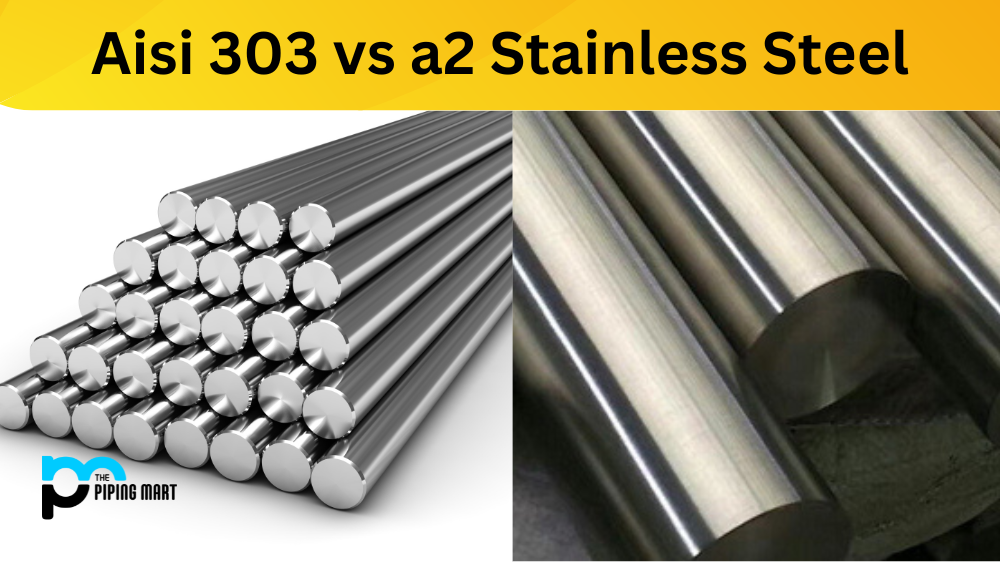Most of us are familiar with stainless steel. We know it’s used in many kitchen appliances, but what is less well-known is that there are actually two different types of stainless steel: 200 series and 300 series. In this blog post, we will explore the differences between these two types of stainless steel and examine how they can be used in your home or business.
What is 200 Series Stainless Steel?
200 series stainless steel is an alloy made up of chromium-nickel-manganese, which is non-magnetic and highly resistant to corrosion. It is also very ductile and malleable, making it easy to work with. This type of stainless steel has been around since the 1950s and is often found in everyday products such as kitchen sinks, pots, pans, flatware, etc. However, it should be noted that this type of stainless steel does not have any molybdenum or nickel added to it, which makes it more prone to rusting than other types of stainless steel. 200 series stainless steel is an austenitic chromium-nickel-manganese stainless steel that was developed originally to conserve nickel. It provides properties similar to Type 301 and can be used in most applications for Type 301. This alloy is non-magnetic in the annealed condition but becomes slightly magnetic when cold worked.
What is 300 Series Stainless Steel?
300 series stainless steel is also an alloy made up of chromium-nickel-manganese, but unlike its 200 series counterpart, it contains a higher percentage of nickel which makes it magnetic as well as more resistant to corrosion than its predecessor. It also has molybdenum added which further enhances its resistance to corrosion and makes the material even more durable than before. This type of stainless steel has been around since the 1930s and can be found in various applications such as medical equipment, industrial machinery, food processing equipment, automotive parts, etc.300 series stainless steel is an austenitic chromium-nickel stainless steel that was developed originally to conserve nickel. It provides properties similar to Type 301 and can be used in most applications for Type 301. This alloy is non-magnetic in the annealed condition but becomes slightly magnetic when cold worked.
Difference Between 200 and 300 Series Stainless Steel
The main difference between 200 and 300-series stainless steel is that the 200 series is made from austenitic chromium-nickel-manganese alloys while the 300 series is made from austenitic chromium-nickel alloys. Both 200 and 300 series steels are non-magnetic in the annealed condition, but they will become slightly magnetic when cold worked.
When comparing 200 vs 300 series stainless steel, there are a few key differences to consider. The main difference between 200 and 300-series stainless steel is that the 200 series is made from austenitic chromium-nickel-manganese alloys while the 300 series is made from austenitic chromium-nickel alloys. Both 200 and 300 series steels are non-magnetic in the annealed condition, but they will become slightly magnetic when cold worked. Additionally, 200 series stainless steel is less expensive than 300 series stainless steel as it contains less nickel.
Advantages of 200 Series Stainless Steel
Some of the advantages of using 200 series stainless steel include its low cost, as it contains less nickel than other grades of stainless steel; its high ductility, which makes it easy to form; and its high weldability, which makes it easy to join without the need for specialized welding techniques. Additionally, this grade of stainless steel has excellent corrosion resistance, making it ideal for use in a wide range of industries and applications.
Advantages of 300 Series Stainless Steel
300 series stainless steel offers several advantages over other grades of stainless steel, including its high strength, corrosion resistance, and weldability. Additionally, this grade of stainless steel has excellent resistance to oxidation at high temperatures, making it ideal for use in a wide range of industries and applications.
Conclusion:
Both 200 series and 300 series stainless steels have their own unique properties, which make them ideal for different applications depending on what you need them for. For example, if you are looking for something that can withstand high temperatures or frequent cleaning, then the 300 series would be a better choice due to its higher resistance levels compared to the 200 series. On the other hand, if cost-effectiveness is a priority, then the 200 series may be preferable due to its lower price point compared to its 300 series counterpart. Ultimately it comes down to your individual needs as both types offer superior performance when compared to other materials such as aluminium or copper alloys so take into consideration your specific requirements before making a decision on which one best suits your needs!
Meet Heer, a dynamic and driven writer learning tricks of her trade in the metal industry. With a background in Digital Marketing, Heer brings a unique perspective to her writing, sharing valuable insights. Apart from blogging she like reading and hiking.




